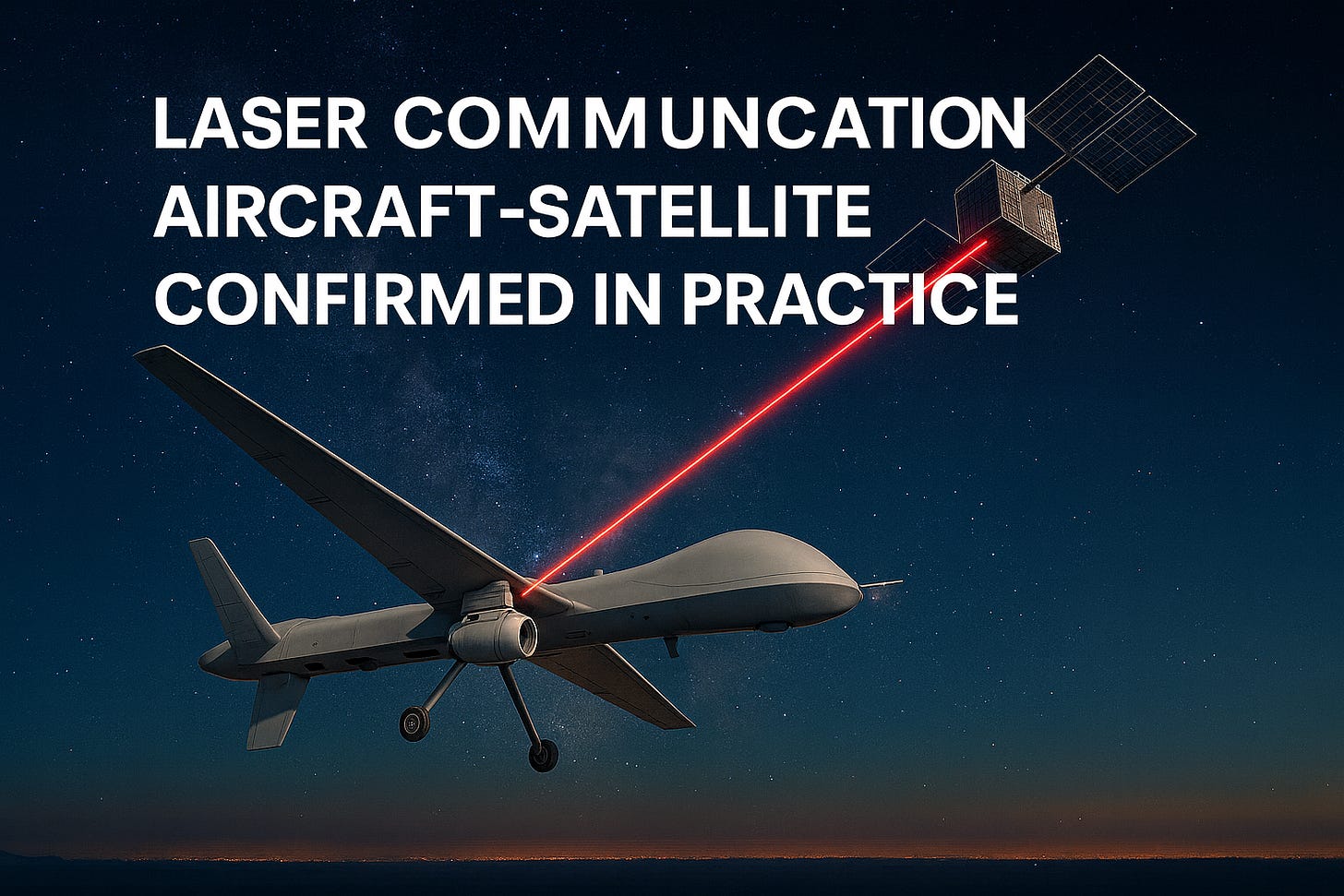Laser communication “aircraft ↔ satellite” confirmed in practice
General Atomics and Kepler conducted a successful bidirectional session under the SDA OCT standard, opening the way to new high-speed channels between air and space.
In previous publications we already showed that the real race is not about the number of satellites, but about the quality of connectivity:
and that optics are turning from experiments into a full industry:
And now we have fresh proof — an official demo from General Atomics and Kepler.
What happened
General Atomics Electromagnetic Systems and Kepler Communications US announced a successful bidirectional optical session between the GA-EMS airborne terminal and a Kepler satellite in low orbit.
The test included pointing, acquisition, tracking, and data packet transfer.
This is the first official evidence that the SDA OCT standard also works in “aircraft ↔ satellite” mode.
This is an important milestone for the entire Space Development Agency (SDA) architecture, since it is not just about an experiment but about interoperability verification — when equipment from different manufacturers works together on a unified standard.
Why it matters
Speed and security. The radio spectrum is overloaded and vulnerable to EW. Laser channels operate with a narrow beam that is difficult to intercept or jam. This allows transmission of large volumes of sensor data without being “choked” down to megabits.
Backup to traditional channels. Optical uplink directly from onboard to orbit creates a bypass route: from aircraft or UAV → to satellite → through inter-satellite links → to ground. This reduces dependence on the overloaded radio spectrum.
Open standard. SDA OCT ensures compatibility between equipment from different manufacturers. This opens the possibility of taking terminals, satellites, and ground stations “off the shelf” and combining them into a working chain.
Operational efficiency. Data is transmitted directly during flight. The faster it reaches ground centers, the faster decisions can be made.
Technical details
LAC-12 (GA-ASI). Airborne optical terminal in a fuselage-mounted pod, stabilized on two axes. Specs: throughput up to 850 Mbps at a distance of over 100 km, optical output power 0.1–1 W, aperture 72 mm. Key features — LPI/LPD and anti-jamming.
Kepler Pathfinder with TESAT SCOT80. Back in 2024 Kepler conducted the first SDA-compatible inter-satellite links on its spacecraft. This became the basis for current demonstrations.
Kepler × Cailabs. In 2025 SDA-compatible “satellite ↔ optical ground station” channels were confirmed in France. MPLC TILBA®-ATMO modules from Cailabs were used to compensate atmospheric turbulence and couple the signal into single-mode fiber.
Kepler HALO. The company has priority in SDA’s fast-track pool for demonstration missions, including T2DES.
HydRON Element #1 (ESA). Kepler, TESAT and Airbus are working on a European optical backbone to provide an “orbital fiber network” with terabit-level speeds.
What’s next
GA-EMS GA-75. In 2026 the launch of two satellites with integrated optical terminals from GA-EMS is planned for further demonstrations in SDA Tranche 1.
Kepler and SDA. The company remains a key player in SDA demonstration programs, reaffirming its role in building an interoperable network.
Terminal serial production. Tesat-Spacecom is already preparing for mass production — up to one thousand optical terminals per year. Direct-to-ground channels are expected to reach stable operational level within the next five years.
Challenges and solutions
Atmosphere. Clouds and turbulence will always remain an issue. The solution comes via technologies such as MPLC and geographically distributed networks of optical stations.
Platform dynamics. An aircraft with high angular rates creates difficulties for pointing, but the unified SDA OCT standard allows terminals from different manufacturers to find each other and maintain a link.
Sources
https://kepler.space/kepler-validates-sda-compatible-space-to-ground-laser-links-with-cailabs/
https://www.ga-asi.com/remotely-piloted-aircraft/lasercom/lac-12
https://www.cailabs.com/en/white-paper/mplc-for-optical-ground-stations/
https://spacedevelopmentagency.mil/optical-communications-terminal-oct-standard/





